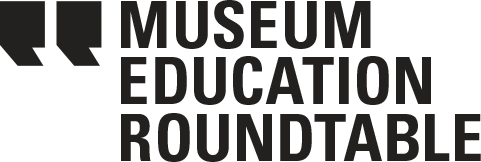How Many Calls to Accessibility Action Do We Need?

“…they will not feel welcome if they discover that their basic needs have been overlooked.”
“In all projects we worked with handicapped people, so that we would meet their needs and their wishes.”
“Merely hiring an interpreter does not resolve all barrier problems.”
“…get acquainted with the local handicapped community and agencies which serve it by forming an advisory committee.”
These calls to action come from Roundtable Reports (the precursor to the Journal of Museum Education) that date to the late 1970s and early 1980s and are currently available to read for free in MER’s Virtual Special Issue “The Arc of Accessibility Work in Museum Education.” In many of these articles, the language, attitudes, and some of the solutions are unsurprisingly outdated and at times hurtful. But at their core these articles are calling for increased access. And in reflecting back on these excerpts, they just as easily could have been uttered in a meeting about inclusion and access at any museum across America in 2020. In reading through over 30 articles that predate the passing of the ADA in 1990, I was amazed at how many times I thought to myself: “Didn’t I just hear someone in a conference presentation urging their session participants to do this very thing? Wasn’t a colleague just telling me that their museum is finally starting a disability advisory board? Aren’t I still trying to get the museum I work for to adopt this practice?”
In the nine years I have worked in museums, there have been many times that colleagues and I have celebrated the small wins like offering ASL interpreted tours of special exhibitions, or changing the colors and font sizes on essential wayfinding signage to be compliant with ADA recommendations. Don’t get me wrong, small wins are important, you have to start somewhere. But in comparing the work others and I have done with the recommendations and work cited in these early articles, I can’t help but wonder “Why am I trying to hold up this work as though it is the newest in accessible best practices, when it is something we should have accomplished a long time ago?” What’s more is that a lot of these small wins are singular and never get fully scaled up to our standard exhibit and program development processes. So, as I reflect on the articles shared in part 1 of this VSI, I was left wondering: how far have we really come?
“Our understandings of accessibility include the legal definitions and provisions of the Americans with Disabilities Act, but we’re striving for inclusive design. We want to go beyond compliance.” – Facing Change
Indeed this expert from the section on accessibility in AAM’s 2018 DEAI publication “Facing Change” sounds quite similar to the introduction to the 1981 two-part special issue of Roundtable Reports “Focus on the Disabled”:
“Museums and other public organizations must not only consider compliance with Section 504 of the Rehabilitation Act of 1973, but must act upon it. Disabled persons can bring much to the museums as visitors and staff. Section 504 can create an accessible two way street for museums and disabled individuals.” – Roundtable Reports, Volume 6: Focus on the Disabled
Of course, by many counts, we have come a long way. There are many museums and many more individual museum educators (and those from other departments) who champion accessibility everyday in all their work. And to be fair, there is much written about disability communities and museum accessibility in these old Roundtable Reports that we, as a field, have moved beyond both because of technological innovations and changing attitudes. But I can’t but help recognize the echo I hear in calls to action today for access and inclusion. If contributors to the JME (and its predecessor Roundtable Reports) have been writing about access for visitors with disabilities for over three decades now, then why haven’t we fully heeded the call? Why are there still so many museums without a staff member dedicated or at least partially dedicated to accessibility and inclusion for visitors with disabilities? Why are there still so many museum programs that do not automatically offer ASL interpretation? Why do museums continue to share images from their collection on social media without Alt Text? Why are braille labels not offered in every exhibit? Why do we continue to negotiate accessible adaptations for human beings against the aesthetics of our gallery designs? Why do so many all staff meetings continue to use PowerPoints with tiny font? Why do we as a field continue to fail to uphold a high standard for accessibility?
I invite you to read Part 1 of our VSI and reflect on the accessibility work at your museum. Have you answered the 30 year call for increased accessibility in museums? Then, stay tuned for Part 2 which drops July 26 and shares articles written after the passing of the ADA to find out where we are now. And I hope you will be inspired to think about and work towards where we should be in a more accessible future.
Sarah Sims is Director of Visitor Engagement and Accessibility at the Missouri Historical Society and serves on the Board of Directors for the Museum Education Roundtable.

